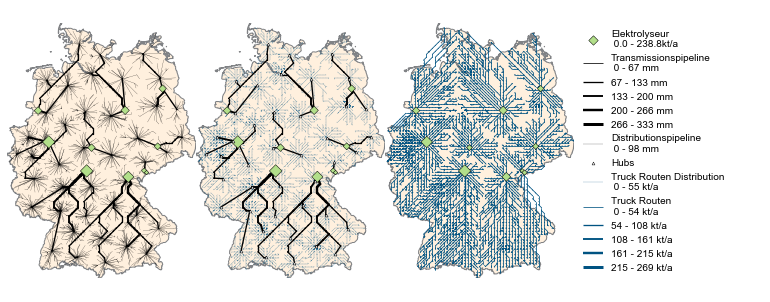Funding Models
Funding Models#
The developers and organisations in this field are supported by a diverse set of funding models. OSS projects benefit from academic and research funding, private sector investment, and government grants. Each project has a different mix of funding models due to the unique structure and ecosystem they are part of.
Only 3.8% of the projects officially offer GitHub users the option to donate. This is particularly difficult to explain due to the high prevalence of community-based projects. There may be a lack of interest because of the project’s low usage and popularity, which in turn means that the developers aren’t seeking financial support.
Public sector funding from research councils, the European Union, academic labs and national labs play a transformative role in sustaining OSS projects in sustainability. Universities are not only knowledge providers but can also bring stability, independence and access to developer resources via their Research Software Engineering teams.
However, there are very few dedicated funds for OSS development and maintenance in sustainability. Large academic projects prioritise academic research and dedicate small amounts of funding to open source software development. Where there are funds, such as UKRI’s Infrastructure Fund in the UK, or Horizon Europe, they primarily support new feature development and frequently not at the scale that supports significant strategic software developments. There is no dedicated fund or consideration around OSS maintenance; Developers and Research software engineers, in academic labs, are trying to squeeze in person-months in multiple concurrent projects and make this open research infrastructure reusable across many projects. And since features are used across many projects, assigning maintenance or user support resources to any particular OSS development is complex.
“It’s a little bit bizarre that there are no government grants available for open source software for public transit.” Developer of popular transportation planning and traffic simulation software
Non-profit and think tank OSS projects face a similar challenge, whereby funding for a new project is relatively easy to obtain, while virtually impossible to raise funding for maintaining software and data infrastructure. Very few funders focus on the use and maintenance phase of the project development lifecycle.
Projects with larger user bases (e.g. openFAST) have a mix of investments, grants and income from industry. This type of project, however, is more likely to incur technical debt, which will increase the costs of both ongoing maintenance and future development. These more mature projects require more significant funding from industry and governments. In many cases, however, a different business structure and legal entity would be required if a lab-led project wanted to accept donations or seek alternative grant funding. This is currently not feasible in government-funded labs, research councils, and academic labs.
Collaboration between industry and academia brings new challenges and opportunities. Academic open source software that has commercial potential typically requires intensive and long-term financial support, which cannot be provided from within academia. The developers we spoke with had prior experience with hybrid business models such as Open Core, where the backbone of the codebase is open source. At the same time, the project maintainers want to support open source without commercialisation being at the expense of the communities. Maintainers are aware that their users and contributors may be upset if they feel that open source work is being used by companies for profit. Choosing the right open source business model, developer involvement and organisational form is crucial to ensure successful commercial application and community development.
Industry-consulting models have had mixed success so far. In some circumstances (like green software in data centre operations), open-sourcing the code is a hard requirement from a developer’s perspective. In this case, the response from industrial partners has been positive. In other instances, companies wanted to keep the project used to model their systems (e.g., batteries) closed source for several years, as they were worried their competitors would use them for free. However, it may be counterproductive to maintain closed sourced culture while attempting to rapidly scale sustainable outcomes.
Finally, it is critical to demonstrate and quantify the impact of OSS sustainability projects across industry and civic society. Government departments fund academic labs that, in turn, collaborate with industry partners to develop new functionality. In addition, research funders and government agencies, such as the US Department of Energy, are interested in encouraging innovation in specific strategic sectors, such as renewable energy. When academic projects can demonstrate the value of open source work outside academia and the co-benefits and return on investment to public funders, it becomes easier for these projects to raise funding.

Fig. 45 - Hydrogen Infrastructure Model offers the functionality to calculate predefined hydrogen supply chain architectures with respect to spatial resolution for the analysis of explicit nationwide infrastructures.
License: MIT#
